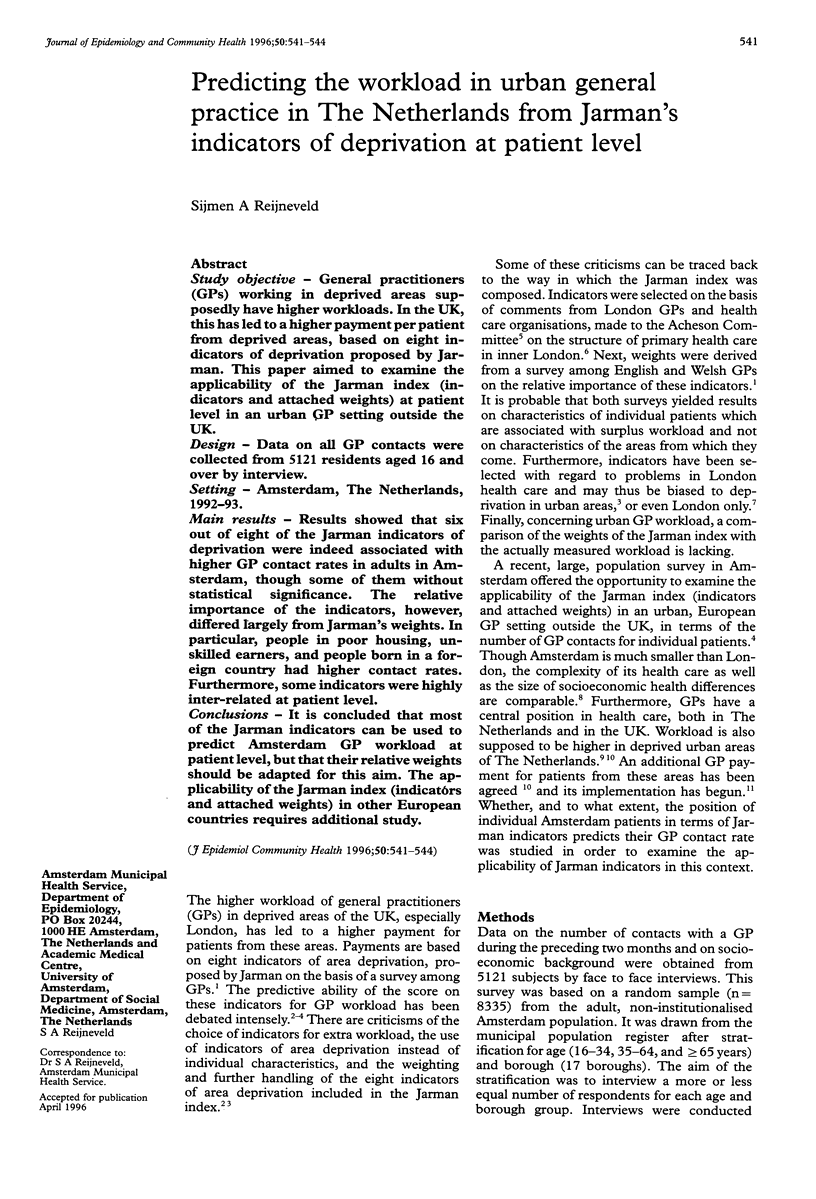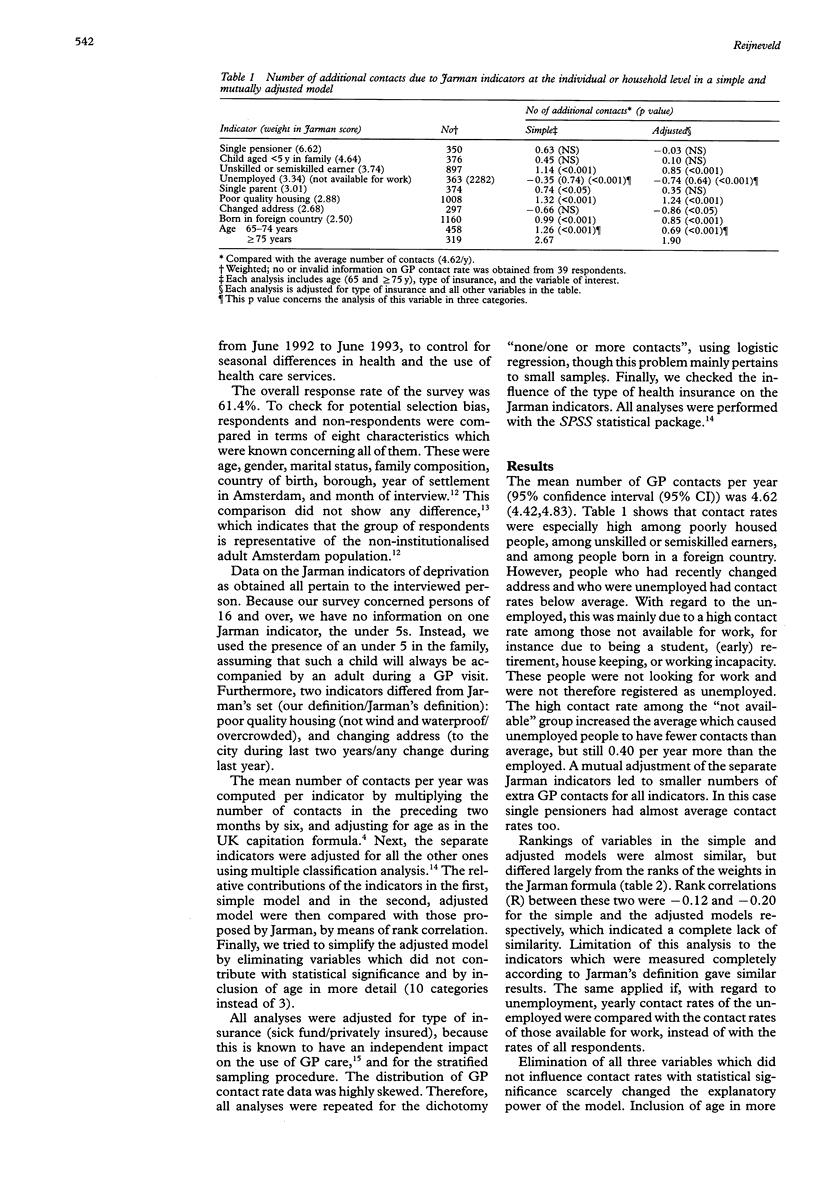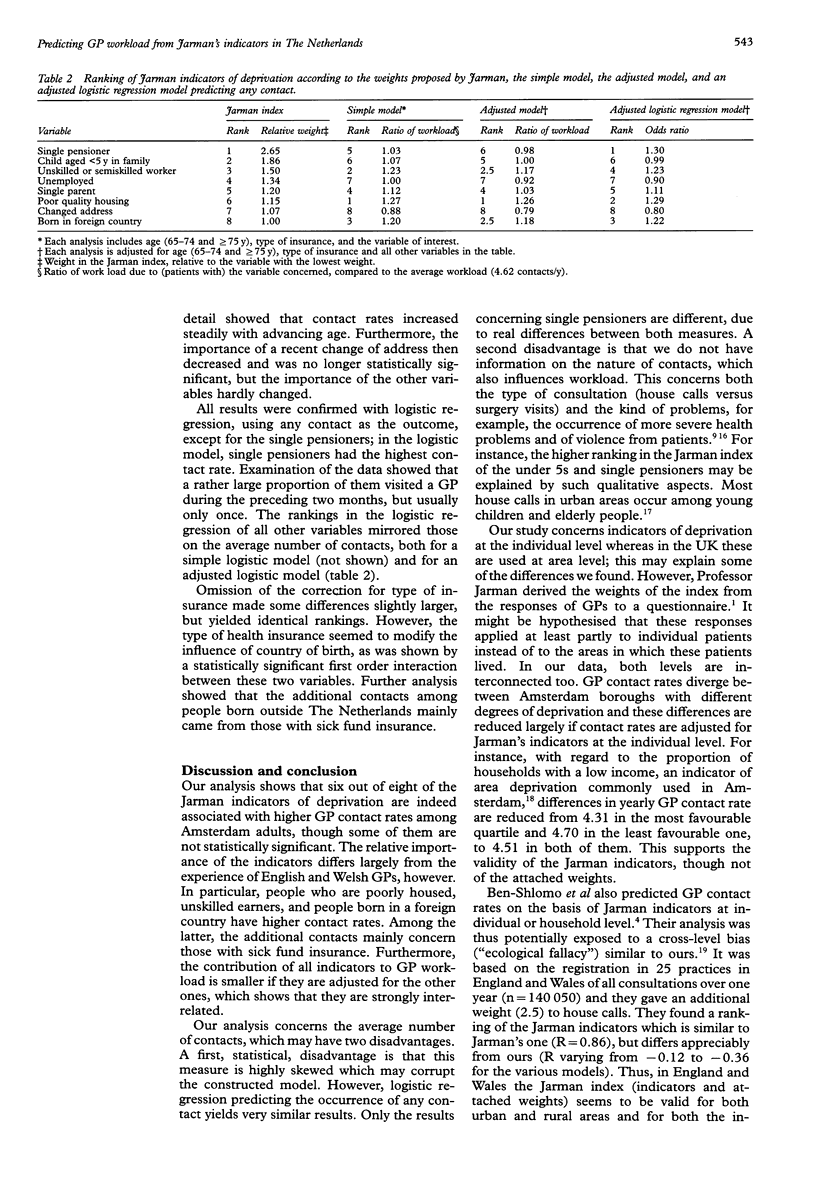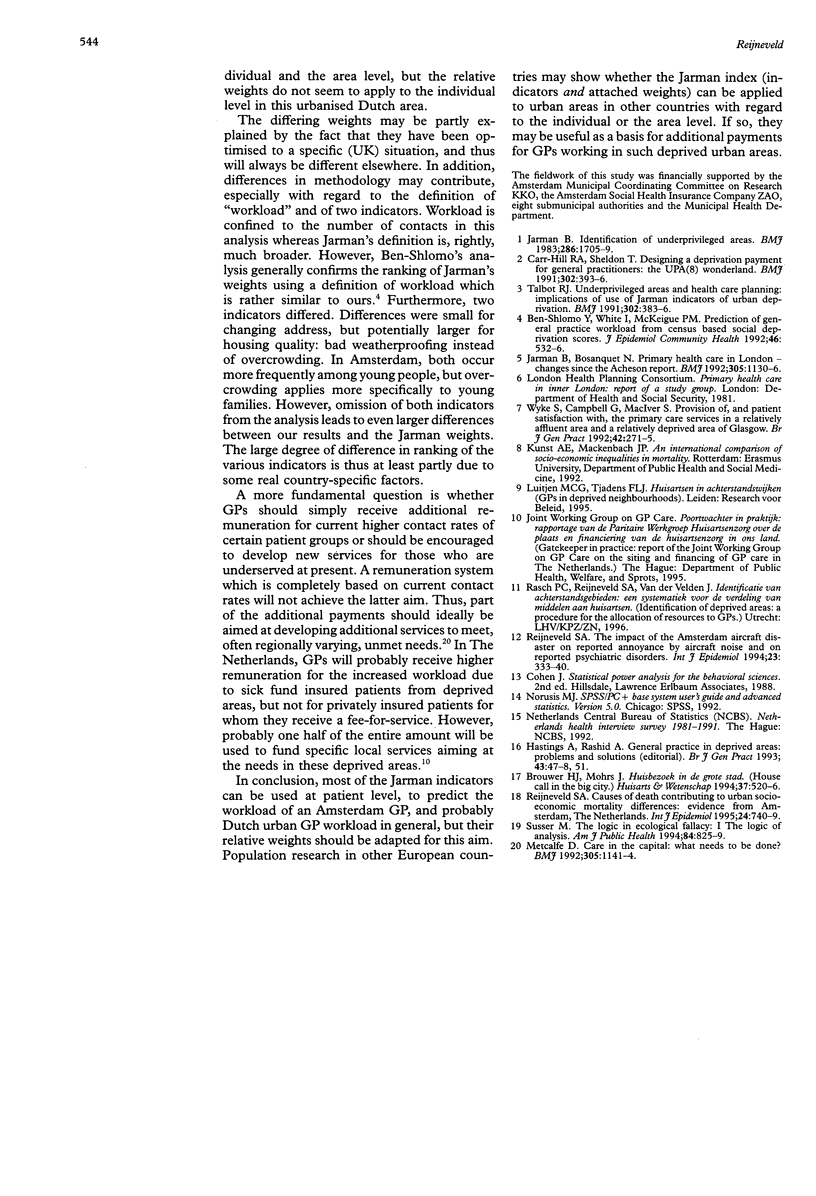Abstract
STUDY OBJECTIVE: General practitioners (GPs) working in deprived areas supposedly have higher workloads. In the UK, this has led to a higher payment per patient from deprived areas, based on eight indicators of deprivation proposed by Jarman. This paper aimed to examine the applicability of the Jarman index (indicators and attached weights) at patient level in an urban GP setting outside the UK. DESIGN: Data on all GP contacts were collected from 5121 residents aged 16 and over by interview. SETTING: Amsterdam, The Netherlands, 1992-93. MAIN RESULTS: Results showed that six out or eight of the Jarman indicators of deprivation were indeed associated with higher GP contact rates in adults in Amsterdam, though some of them without statistical significance. The relative importance of the indicators, however, differed largely from Jarman's weights. In particular, people in poor housing, unskilled earners, and people born in a foreign country had higher contact rates. Furthermore, some indicators were highly inter-related at patient level. CONCLUSIONS: It is concluded that most of the Jarman indicators can be used to predict Amsterdam GP workload at patient level, but that their relative weights should be adapted for this aim. The applicability of the Jarman index (indicators and attached weights) in other European countries requires additional study.
Full text
PDF



Selected References
These references are in PubMed. This may not be the complete list of references from this article.
- Ben-Shlomo Y., White I., McKeigue P. M. Prediction of general practice workload from census based social deprivation scores. J Epidemiol Community Health. 1992 Oct;46(5):532–536. doi: 10.1136/jech.46.5.532. [DOI] [PMC free article] [PubMed] [Google Scholar]
- Hastings A., Rashid A. General practice in deprived areas: problems and solutions. Br J Gen Pract. 1993 Feb;43(367):47-8, 51. [PMC free article] [PubMed] [Google Scholar]
- Jarman B., Bosanquet N. Primary health care in London--changes since the Acheson report. BMJ. 1992 Nov 7;305(6862):1130–1133. doi: 10.1136/bmj.305.6862.1130. [DOI] [PMC free article] [PubMed] [Google Scholar]
- Jarman B. Identification of underprivileged areas. Br Med J (Clin Res Ed) 1983 May 28;286(6379):1705–1709. doi: 10.1136/bmj.286.6379.1705. [DOI] [PMC free article] [PubMed] [Google Scholar]
- Metcalfe D. London after Tomlinson. Care in the capital: what needs to be done. BMJ. 1992 Nov 7;305(6862):1141–1144. doi: 10.1136/bmj.305.6862.1141. [DOI] [PMC free article] [PubMed] [Google Scholar]
- Reijneveld S. A. Causes of death contributing to urban socioeconomic mortality differences in Amsterdam. Int J Epidemiol. 1995 Aug;24(4):740–749. doi: 10.1093/ije/24.4.740. [DOI] [PubMed] [Google Scholar]
- Reijneveld S. A. The impact of the Amsterdam aircraft disaster on reported annoyance by aircraft noise and on psychiatric disorders. Int J Epidemiol. 1994 Apr;23(2):333–340. doi: 10.1093/ije/23.2.333. [DOI] [PubMed] [Google Scholar]
- Susser M. The logic in ecological: I. The logic of analysis. Am J Public Health. 1994 May;84(5):825–829. doi: 10.2105/ajph.84.5.825. [DOI] [PMC free article] [PubMed] [Google Scholar]
- Talbot R. J. Underprivileged areas and health care planning: implications of use of Jarman indicators of urban deprivation. BMJ. 1991 Feb 16;302(6773):383–386. doi: 10.1136/bmj.302.6773.383. [DOI] [PMC free article] [PubMed] [Google Scholar]
- Wyke S., Campbell G., Maciver S. Provision of, and patient satisfaction with, primary care services in a relatively affluent area and a relatively deprived area of Glasgow. Br J Gen Pract. 1992 Jul;42(360):271–275. [PMC free article] [PubMed] [Google Scholar]


